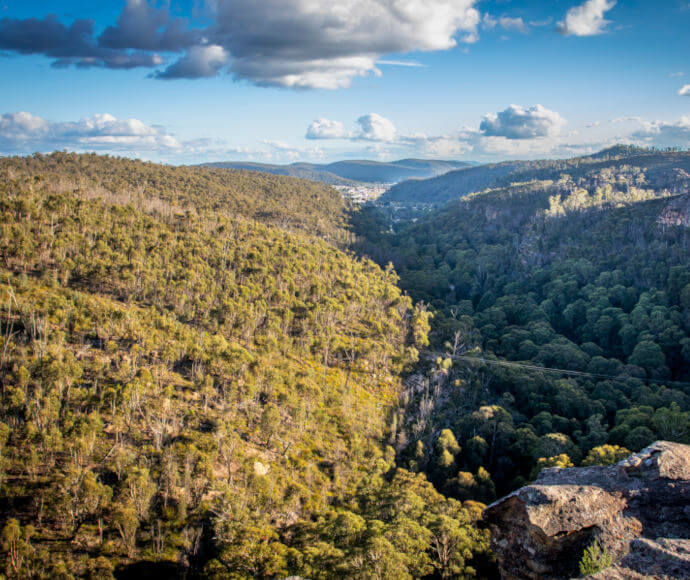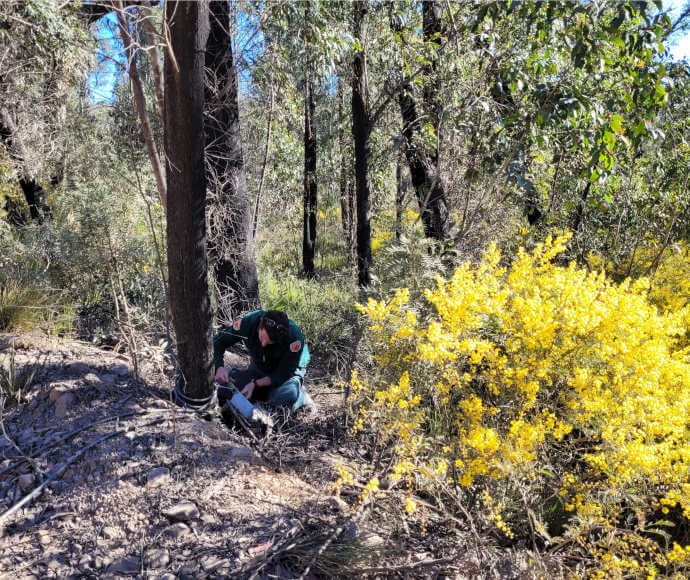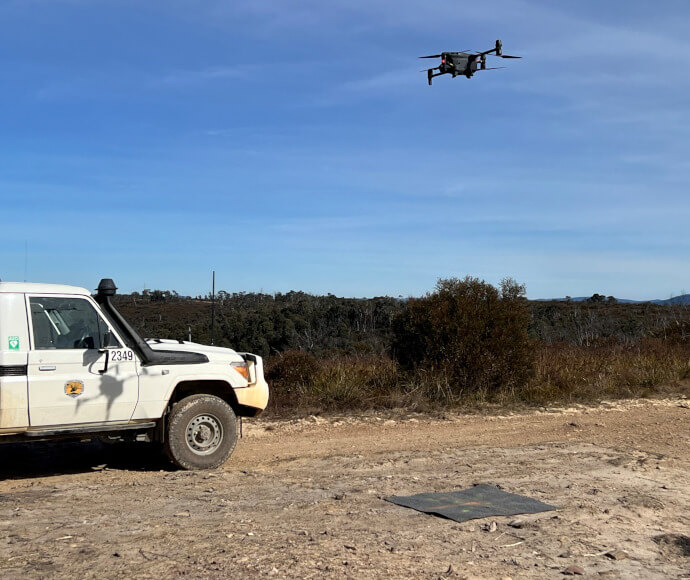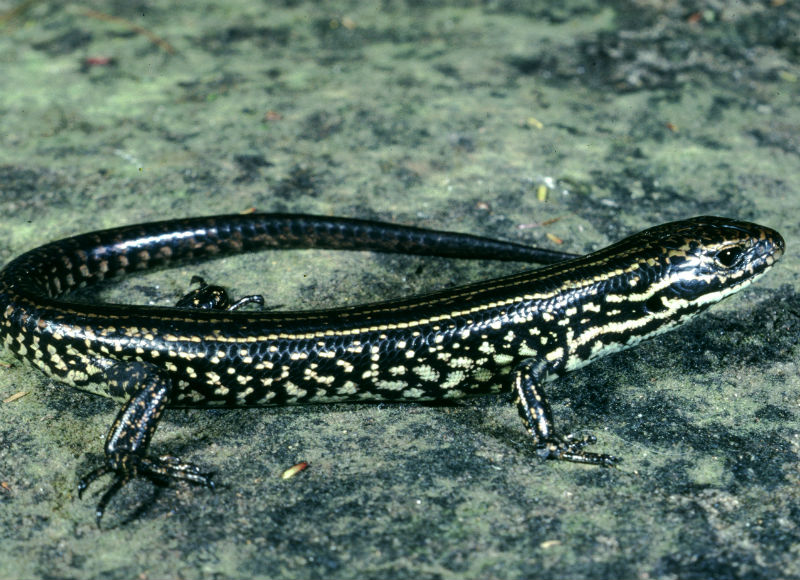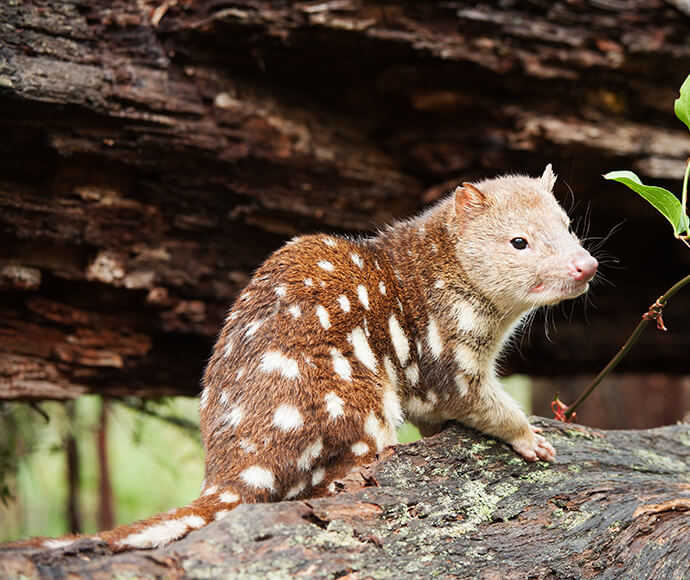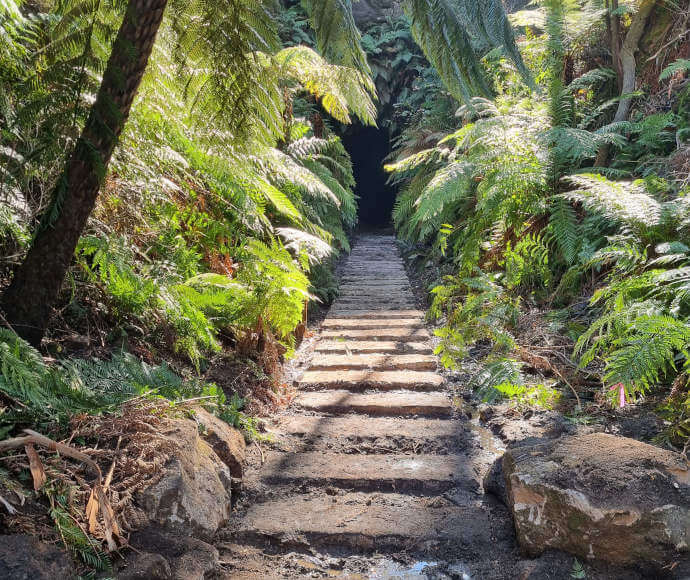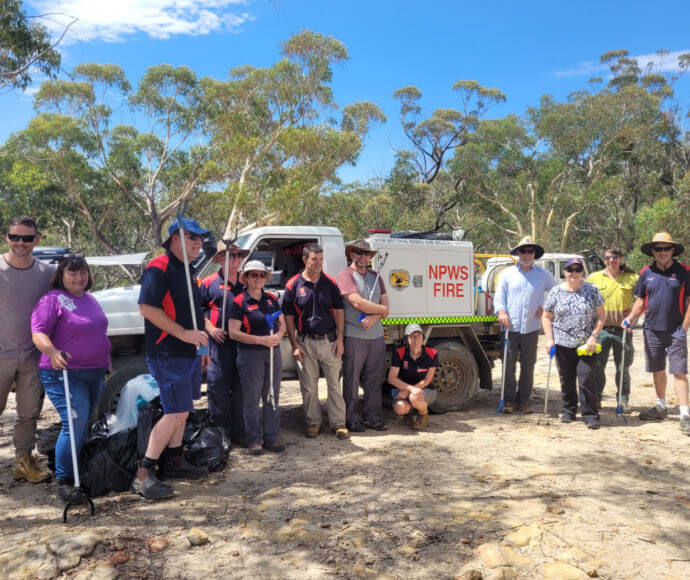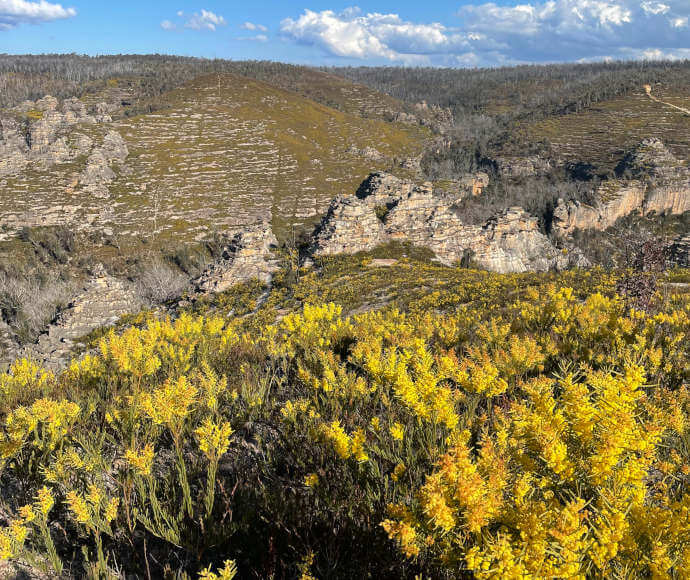Acknowledgement of Country
The Gardens of Stone State Conservation Area is Wiradjuri Country and we acknowledge Elders past, present and future. We respect the rights and aspirations of Wiradjuri people as custodians of their Country. The park is an integral part of this rich and complex cultural landscape which is of profound significance.
What's been happening?
Protecting the outstanding natural and cultural values of the park, and providing for safe, sustainable and inspiring visitor experiences, is our key management focus for the park.
We've been out and about getting to know the park, assisting visitors and gaining a better understanding of the park’s management challenges and opportunities. If you see us out in the park, come up and say hello.
What we've been doing:
- installing new park signs to promote appropriate use and improve visitor safety
- removing asbestos from the park
- installing traffic counters and security cameras to record visitor entry data and monitor visitation
- removing over 3 tonnes of rubbish from the park in 2 clean-up days
- patrolling the park every weekend and during peak holiday times
- maintaining and upgrading roads including Glow Worm Tunnel Road, the Western Boundary Fire Trail, and the Maiyingu Marragu Trail (Blackfellows Hand Trail)
- planning for improved visitor experiences
- managing threatened species and controlling weeds and feral animals
- engaging with stakeholders and the community.
Strategic plans inform our management
We've prepared a number of strategic plans for the park, to ensure that our management approach is well informed and considered, and that we achieve positive outcomes for the park and the community.
The Gardens of Stone State Conservation Area Plan of Management provides overarching direction for the park’s management. We’ve also recently prepared a number of other plans including a draft Reserve Fire Management Strategy, a restoration and management strategy for the Ecological Swamps, and a pine wilding control plan.
A spotlight on the Blue Mountains water skink
Next time you visit Gardens of Stone State Conservation Area, keep an eye out for the endangered Blue Mountains water skink (Eulamprus leuraensis).
This semi-aquatic skink is endemic to high elevation areas of the middle and upper Blue Mountains, including the Newnes Plateau, with recent genetic work establishing that populations on the Newnes Plateau are genetically and morphologically distinct from populations in the Blue Mountains.
It is a medium-sized lizard growing to around 200 mm in length, with a very dark brown to black back with narrow yellow–bronze to white stripes along its length to the beginning of the tail and continuing along the tail as a series of spots.
The skink is active on warm sunny days, where you may be lucky to see it feeding on grasshoppers, flies, moths, weevils and wasps.
Find out more about the skink on our threatened species webpage.
Protecting natural and cultural values
Threatened species surveys
The Gardens of Stone State Conservation Area protects at least 16 threatened ecological communities and more than 80 rare and threatened plant and animal species.
Over the past year we’ve established a range of monitoring programs to better understand the location, type and extent of threatened plants and animals occurring in the park, and tailor our management approaches to ensure their protection. We were excited to spot the following threatened animals on recent surveys:
- spotted-tail quolls
- greater gliders
- scarlet robins
- greater broad-nosed bat
- Eastern bent-winged bat
- powerful owl
- Eastern horseshoe hat
- long-nosed bandicoot
- Krefft’s glider.
We've recently partnered with the Local Land Services to survey and record populations of Deane's boronia across the reserve. Healthy populations have been identified in recent months, signalling a strong recovery following the 2019–20 bushfires. Surveys also identified new populations of the threatened plant at Dingo Swamp.
Pest management
We've established monitoring programs to better inform our control programs and reduce the impact of weeds and feral animals on the park’s biodiversity. We are carrying out a major program to remove pine trees that have self-seeded or naturally regenerated from the previous state forest plantations and are encroaching the native forest and road verges.
Ongoing weed control programs involving a range of techniques including spraying and plant removal have been established in the following priority areas:
- upland swamps and adjoining native vegetation
- major tracks and trails
- old pine plantation areas.
Improving visitor experiences
The Gardens of Stone State Conservation Area is popular with visitors, who enjoy a range of recreational activities, including bushwalking, camping and 4-wheel drive touring.
Our vehicle counters have indicated busy times in January, April and May, with over 2,000 vehicles per month. Between 1,810 and 1,934 vehicles were recorded visiting in February, March, June and July.
We have had staff in the park every weekend since its establishment, to provide information to visitors and promote safe and sustainable use. We’ve also installed surveillance cameras in the park to assist in managing illegal activities, including unlicensed drivers and riders, unregistered vehicles and dogs in the park.
Forest Camp update
The detailed design for the Forest Camp family campground has been completed, with construction to commence early in 2024. The campground will include around 60 formalised camp sites, and a dedicated large group camping area, and will include shelters, toilets, a children’s play area and dedicated camping sites for tents and caravans.
The design will feature the colourful history of the site, incorporating the use of Wolgan Railway sleepers in the children's play area, restoration of the historical staircases and terraces and installation of engaging interpretive signs.
Upgrades at Glow Worm Tunnel precinct
We’re delivering a range of improvements at the Glow Worm tunnel precinct in the nearby Wollemi National Park, to improve the visitor experience and repair the significant damage caused by the 2019 bushfires and subsequent floods.
The upgrades are part of a project funded by the NSW Government’s Bushfire Local Economic Recovery Fund and include:
- resurfacing of walking tracks
- improvements to drainage
- replacement of steps
- installation of creek crossings
- interpretive signage.
A new, carefully designed brick-edged pathway through the Glow Worm Tunnel is also being built to reduce visitation impacts on the glow worms and deliver an improved visitor experience.
To allow the works to be completed, the Glow Worm Tunnel visitor precinct and associated walking tracks are closed until December 2023, including:
- Glow Worm Tunnel car park
- Glow Worm Tunnel walking track
- Pagoda Track (Old Coach Track)
- Glow Worm Tunnel to Newnes walking track
- Dry Canyon track (Wolgan View canyon).
Old Coach Road car park, Old Coach Road and Tiger Snake Canyon access track is also closed until 23 September 2023 to enable the safe completion of the upgrades, including helicopter lifting of construction materials.
Check for current closure alerts before you visit on the NPWS alerts webpage.
Get involved
Introducing the Gardens of Stone Guardians
The 'Gardens of Stone Guardians' volunteer program was established in early 2023 and currently has around 60 members who are making a valuable contribution at the park. As part of Clean Up Australia Day events in March, 22 volunteers joined us to remove a large amount rubbish from Forest Camp, Bungleboori and Sunnyside Ridge Road. This included car bodies, general litter and camping rubbish left behind by careless visitors.
Upcoming volunteer activities include clean-up days, pine regrowth removal, planting days and other rehabilitation programs. We welcome new volunteers, so register below if you're interested in joining.
Join Gardens of Stone Guardians
Lithgow Environment Group
We have partnered with the Lithgow Environment Group to deliver its Inspiring the Next Eco-Generation project, with conservation and education at the forefront of the volunteer-led program. Volunteers assisted with the installation of artificial habitat for the eastern pygmy possum in the Gardens of Stone State Conservation Area earlier in the year, followed by an inspiring information session with a local ecologist. For more information visit the Lithgow Environment Group webpage.
Spring is a great time to visit
The milder spring weather offers the perfect conditions to explore the park and experience the amazing pagoda country. Check out the Gardens of Stone State Conservation Area webpage before you visit for all the up-to-date visitor information and closure alerts.
Road maintenance work
Road work is now underway at Baal Bone Trail, Deep Pass/Mount Cameron, Maiyingu Marragu Trail (Blackfellows Hand Trail) and State Mine Gully Road, to improve access for visitors.
No wood fires – 1 October 2023 to 31 March 2024
Consistent with the NSW Rural Fire Service’s bushfire danger period, there is a ban on solid fuel or wood fires from 1 October to 31 March 2024. You can still use gas cookers, except during total fire bans. Check for Total Fire Bans on the NSW Rural Fire Service webpage.
